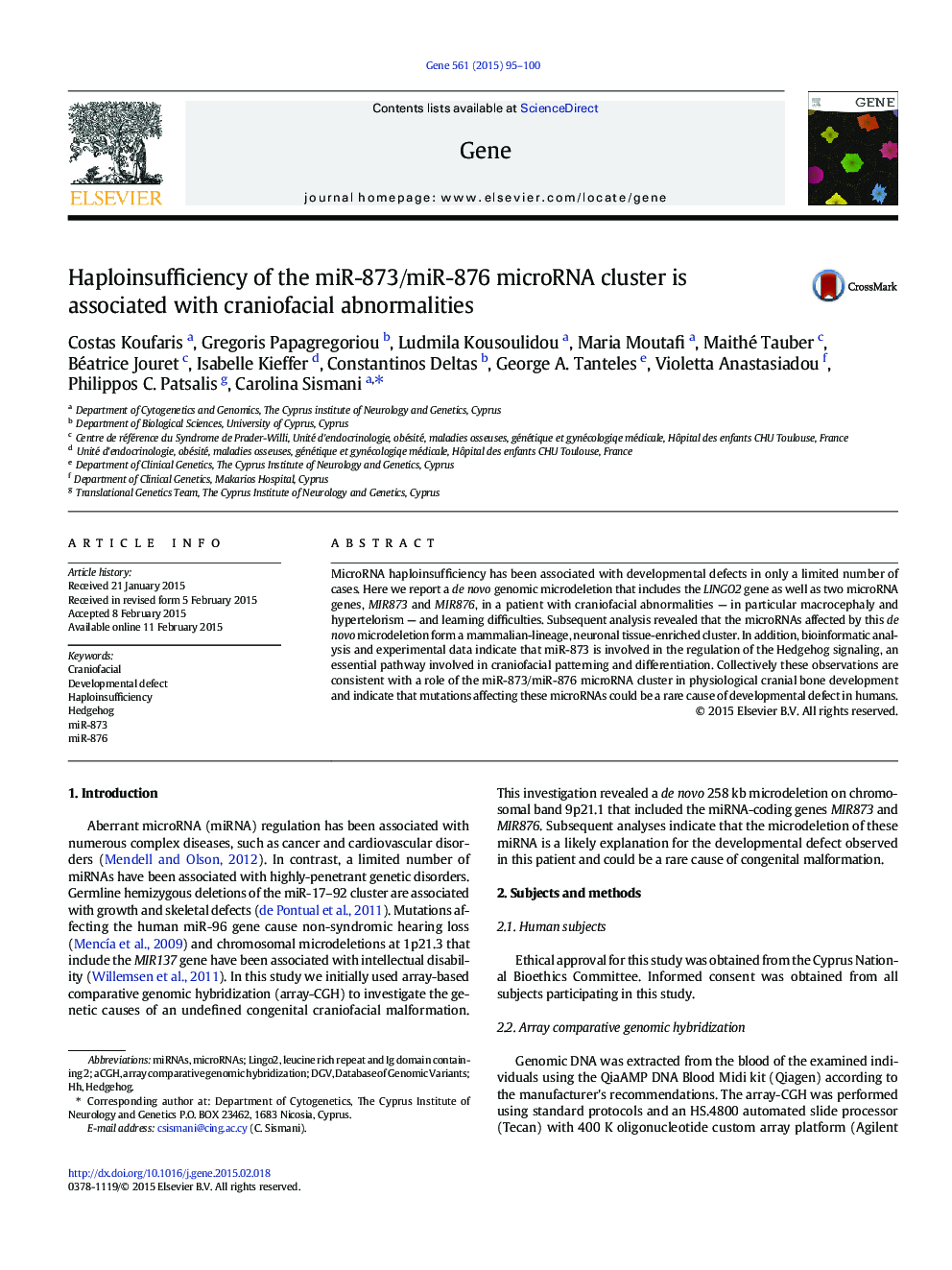| کد مقاله | کد نشریه | سال انتشار | مقاله انگلیسی | نسخه تمام متن |
|---|---|---|---|---|
| 2815838 | 1159896 | 2015 | 6 صفحه PDF | دانلود رایگان |

• Few cases of miRNA haploinsufficiency have been associated with developmental defects in humans.
• We identified a de novo genomic deletion of miR-873 and miR-876 genes in a patient with cranial malformations.
• These miRNAs form a mammalian-specific cluster with expression that is highly enriched in neuronal tissue.
• Bioinformatic and experimental data support that miR-873 is involved in the regulation of the Hedgehog pathway.
MicroRNA haploinsufficiency has been associated with developmental defects in only a limited number of cases. Here we report a de novo genomic microdeletion that includes the LINGO2 gene as well as two microRNA genes, MIR873 and MIR876, in a patient with craniofacial abnormalities — in particular macrocephaly and hypertelorism — and learning difficulties. Subsequent analysis revealed that the microRNAs affected by this de novo microdeletion form a mammalian-lineage, neuronal tissue-enriched cluster. In addition, bioinformatic analysis and experimental data indicate that miR-873 is involved in the regulation of the Hedgehog signaling, an essential pathway involved in craniofacial patterning and differentiation. Collectively these observations are consistent with a role of the miR-873/miR-876 microRNA cluster in physiological cranial bone development and indicate that mutations affecting these microRNAs could be a rare cause of developmental defect in humans.
Journal: Gene - Volume 561, Issue 1, 25 April 2015, Pages 95–100